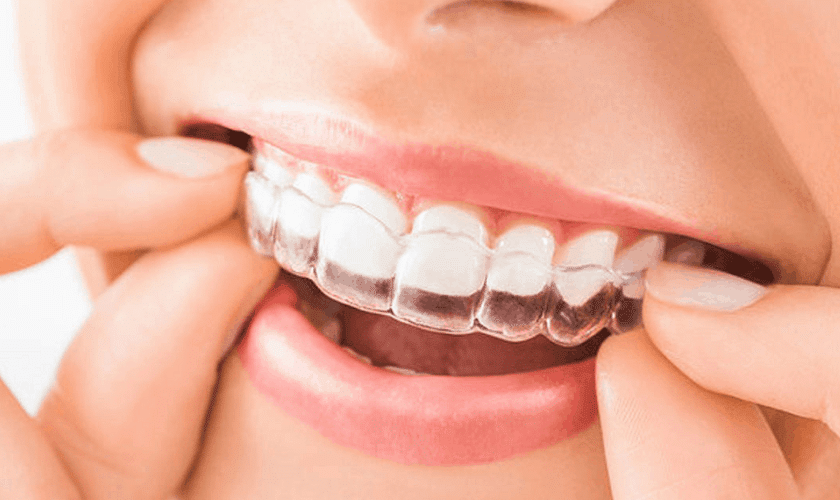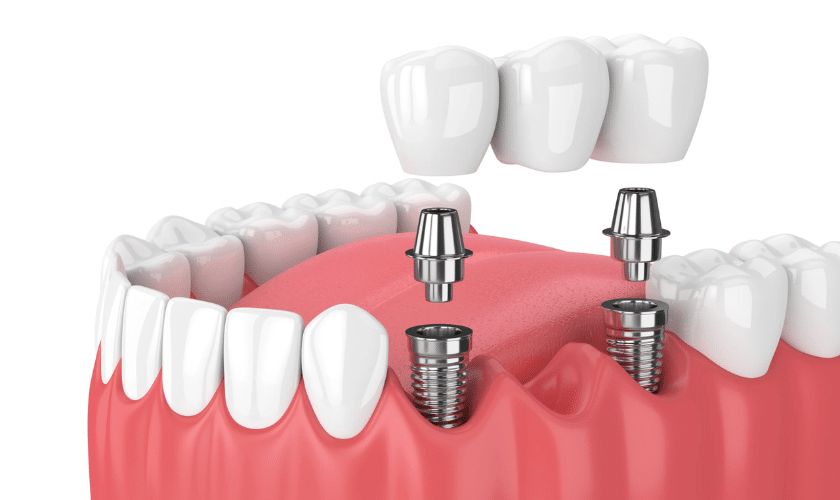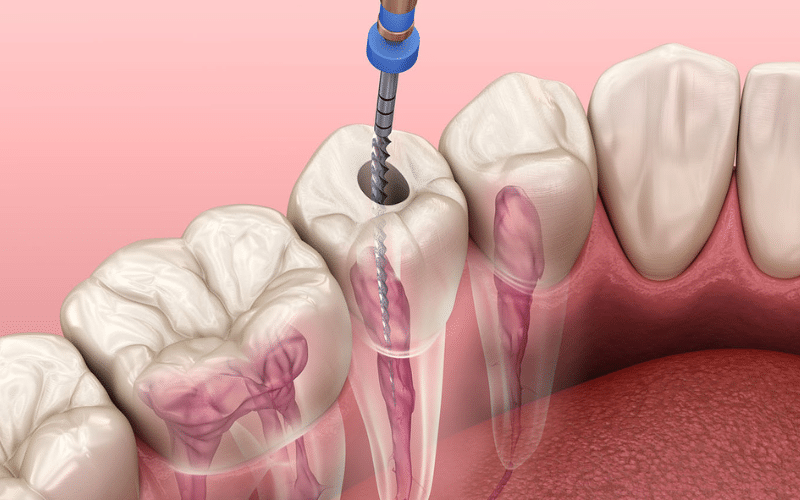
Everyone desires a bright, white smile, but unfortunately, this isn’t always the case. Over time, our teeth can become discolored and stained due to various factors such as diet, aging, or smoking habits. Luckily there are numerous ways you can get your pearly whites back! Teeth whitening is one of the most popular cosmetic dental treatments that can help restore your smile’s brilliance and boost your confidence. But how does it work? In this blog post, we will explore the science behind teeth whitening treatments and find out how they work their magic on our smiles!
How Teeth Whitening Works
Teeth whitening works by using a bleaching agent to lighten the color of your teeth. The most common active ingredient used in teeth whitening products is hydrogen peroxide. This chemical breaks down into water and oxygen, which penetrates the enamel and dentin layers of your tooth, breaking apart any stains or discoloration.
The strength and concentration of the hydrogen peroxide vary depending on the type of treatment you use. Over-the-counter products usually contain lower concentrations, while professional treatments administered by a dentist use higher concentrations for more effective results.
During teeth whitening treatments, protective barriers are placed on your gums to prevent irritation from the bleaching agents. Then, either a gel or tray containing the bleaching solution is applied directly onto your teeth for a certain amount of time.
It’s important to note that not all types of discoloration can be treated with teeth whitening alone. For example, if you have intrinsic staining caused by medication or trauma to the tooth, other cosmetic dental procedures may be necessary to achieve optimal results.
Understanding how teeth whitening works can help you make an informed decision about which method will work best for achieving your desired level of brightness and whiteness in your smile!
The Types Of Teeth Whitening Treatments
There are several types of teeth whitening treatments available to help you achieve a brighter, more confident smile. These treatments range from over-the-counter products to professional dental procedures.
One common type of teeth whitening treatment is the use of at-home bleaching kits. These typically come in the form of gels or strips that are applied directly to the teeth for a specified amount of time each day. While these can be effective, they may take longer than other methods and require consistent use for best results.
Another popular option is in-office teeth whitening, which involves a dentist applying a powerful bleaching agent directly to your teeth under controlled conditions. This method often produces immediate and dramatic results but can be costly compared with other options.
Other types of treatments include laser whitening, which uses light energy to activate a bleaching solution on your teeth, and natural remedies such as oil pulling or activated charcoal paste.
Ultimately, the best type of treatment will depend on your individual needs and preferences. Consulting with your dentist can help you determine which option is right for you based on factors such as cost, desired speed of results, and level of staining present in your teeth.
How Long It Will Take For Teeth Whitening To Work
The amount of time it takes for teeth whitening to work will depend on the method used and the severity of the discoloration. In-office treatments typically achieve immediate results, while at-home methods can take several weeks.
For in-office treatments, a dentist will use a high concentration of bleaching agent applied directly to the teeth and activated by a special light. This process usually takes about an hour or less and can produce dramatic results that are noticeable immediately after treatment.
At-home methods include using over-the-counter products such as whitening strips, gels, or trays. These products contain lower concentrations of bleaching agents than what is used during in-office procedures. As a result, they may take longer to produce noticeable results.
It’s important to follow instructions carefully and consistently when using at-home products for optimal results. Generally speaking, it can take anywhere from two to four weeks before you start seeing significant improvements in tooth color.
Patience is key when it comes to teeth whitening. While some methods offer quicker results than others, all require time for their full effects to be realized.
Tooth Whitening Products On The Market
There are a plethora of tooth-whitening products available in the market, ranging from whitening toothpaste to DIY kits and gels. Whitening toothpaste contains mild abrasives that help remove surface stains, but they may not be as effective on deep-set stains.
Whitening strips are another popular option that works by applying a thin layer of peroxide gel onto flexible plastic strips that adhere to your teeth. These need to be used consistently for several weeks, with results visible after a few days.
Gel-based whitening products contain higher concentrations of peroxide and can provide more dramatic results than other options. They come in syringes or trays and require you to apply the gel directly onto your teeth using an applicator brush.
Activated charcoal is also gaining popularity as a natural way to whiten teeth. It works by absorbing toxins and bacteria responsible for staining teeth, leaving them brighter over time.
It’s important to note that some over-the-counter whitening products may cause sensitivity or damage if not used correctly or excessively. Consult with your dentist before trying any new product or treatment at home!
Why Do My Teeth Get Stained?
There are several reasons why teeth can become stained or discolored. One of the most common causes is consuming dark-colored beverages like coffee, tea, and red wine. These drinks contain chromogens that attach to the enamel on your teeth and cause stains over time.
Tobacco use is another significant factor in tooth discoloration. Tar and nicotine from cigarettes can quickly turn white teeth yellow or brownish in color.
Poor dental hygiene practices can also contribute to staining as plaque buildup traps surface stains on your teeth. Inadequate brushing and flossing allow these surface stains to penetrate deeper into your enamel causing further discoloration.
Certain medications like antihistamines, antibiotics, and chemotherapy drugs may also affect tooth color by making them look grayish or yellow in appearance.
Aging plays a role in tooth discoloration as the outer layer of enamel becomes thinner over time exposing the darker dentin beneath it.
What Are The Ways To Whiten My Teeth?
If you are looking for ways to whiten your teeth, there are several options available. The first option is to use over-the-counter whitening products such as toothpaste or strips. These products contain various chemicals that can help remove surface stains and make your teeth look brighter.
Another popular option is professional teeth whitening treatments offered by dentists. This type of treatment uses stronger bleaching agents than over-the-counter products and can produce more dramatic results in a shorter amount of time.
You can also try natural remedies like oil pulling, which involves swishing coconut oil around in your mouth for up to 20 minutes per day. While this method may not be as effective as other options, it is a safe and affordable way to improve the appearance of your teeth.
Regardless of which method you choose, it’s important to maintain good oral hygiene habits such as brushing twice daily and flossing regularly. Additionally, avoiding stain-causing foods and drinks like coffee or red wine can help keep your teeth looking bright and white for longer periods of time.
There are many different ways to whiten your teeth depending on your budget and personal preferences. Consider trying different methods until you find one that works best for you!
Professionally Whitened Teeth By A Dentist
If you’re looking for a faster and more effective way to whiten your teeth, then professional teeth whitening by a dentist might be the solution for you. This process is also known as in-office bleaching, which uses stronger and more concentrated products than at-home treatments.
During the procedure, your dentist will apply a bleaching agent directly onto your teeth. The bleach typically contains hydrogen peroxide or carbamide peroxide that breaks down stains on the surface of your enamel. Your dentist may use special lights or lasers to activate the whitening gel and speed up the process.
The entire procedure usually takes between 30 minutes to an hour depending on how discolored your teeth are and how many sessions are needed to achieve desired results. Professional teeth whitening can make your pearly whites up to eight shades lighter in just one session!
While some people may experience sensitivity during or after treatment, dentists have access to specialized desensitizing agents that can help alleviate any discomfort.
If you want fast and dramatic results with minimal risk of error, professional dental whitening may be worth considering!
In summary, teeth whitening is a popular cosmetic dental procedure that can help to improve the appearance of stained or discolored teeth. There are several different types of treatments available, including in-office procedures and at-home products.
Source: Teeth Talk Girl
While some people may see results after just one treatment, others may require multiple sessions before achieving their desired level of whiteness. It’s important to remember that individual results will vary depending on factors such as the severity of staining and existing dental health.
If you’re considering teeth whitening, it’s best to consult with a dental professional who can recommend the safest and most effective treatment for your specific situation. With proper care and maintenance, professionally whitened teeth can last for years to come.
So go ahead and show off your pearly whites with confidence knowing that science has got your back when it comes to Teeth Whitening!





